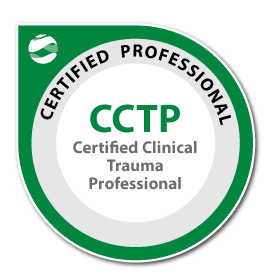3 Approaches to Work through Post-Traumatic Stress
At one time in the mid-1960’s a mystery started happening with returning Vietnam veterans. Unlike veterans of previous wars-World War II and Korean War- these veterans seemed to be suffering emotional trauma. The question was why they were suffering this way when previous generations did not have this emotional damage.
At the heart of this quest, was a Netherlands immigrant to the United States, Bessel Van Der Kolk. His research into post-traumatic stress disorder (PTSD would help to redefine our understanding of how the mind deals with stressful situations.
Specifically, we will look at three insights gleaned from the research of Van Der Kolk and his associates.
3 Methods to Overcome Post-Traumatic Stress Disorder
Psychomotor Therapy- Bessel Van Der Kolk developed a number of successful techniques to help veterans overcome the mental anxiety and depression they face because of their wartime participation.
One of his preferred methods is Psychomotor Therapy.
The idea uses role-play to help survivors relive, and overcome their worst moments by recreating the narrative in the session. Take a recent session that a reporter from the New York Times participated with the group. In the group session, a former soldier named Eugene relived his time in Mosul, Iraq disposing of exploded ordinances.
One time, he shot an innocent man who was approaching too rapidly towards the base. Believing he was a suicide bomber after repeated requests to stop, he killed the man. Afterwards he heard the cries of the mother as she discovered her dead son.
The psychomotor therapy helps recreate the narrative, so Eugene can move on with his life, and reduce the guilt of his role in the incident.
By playing it out, he can finally face his greatest fear.
The mind follows the body- While this is not a technique solely used for PTSD survivors; it is an amazing technique for increasing the flow and feeling in your body.
This technique to quote Tony Robbins uses the idea that “motion creates emotion.” Think of it this way. Have you ever been in a room by yourself listening to music, when the rhythm takes sway and you just have to start dancing?
The more you dance, the more energetic you feel. The motion releases your endorphins just like in a workout, and that triggers a positive emotional response.
This can be a powerful tool for those suffering PTSD, because it forces them to readjust their mind. No longer can someone with PTSD slump down on a chair looking lifelessly into space.
Instead, they are forced to be part of the room and the conversation. The more positive motion they put into this space, the more positive emotional feedback they receive.
Yoga- Along with the idea that the mind follows the body, a great way to put this into use is through Yoga.
“According to a recent article in the Washington Post, “Breathing” focuses a person on a present moment and breaks rumination on negative traumatic thoughts, and secondly, increases ability of observing and understanding internal states and the ability to control them.”
Yoga combines the motion techniques that we discussed above with a focus on breathing that centers post-traumatic stress survivors to refocus their lives for the better.
This is why similar methods like meditation are so popular. They help focus the mind to be present in the moment.
Putting It Together
So, now the question that every person suffering from PTSD wants to know does it work? While researchers continue to study the ability of psychomotor therapy, motion, and yoga, the results are primarily positive.
For example, after 9/11 a study by St. Vincent’s Hospital in Manhattan of 10,000 survivors and relatives of the terrorist attacks in New York indicated that alternative treatments like acupuncture, yoga, and meditation were among the top treatments.
That is why when Van Der Kolk dug into the occurrences of Vietnam veterans versus World War II and Korean War veterans he discovered something disturbing. The majority of these patients who were suffering physical maladies were a construct of the PTSD they faced.
When he realized that, he started on a quest to help these survivors through the methods we discussed above. He discovered that PTSD was a real disease that must be treated by healing the mind and body.



